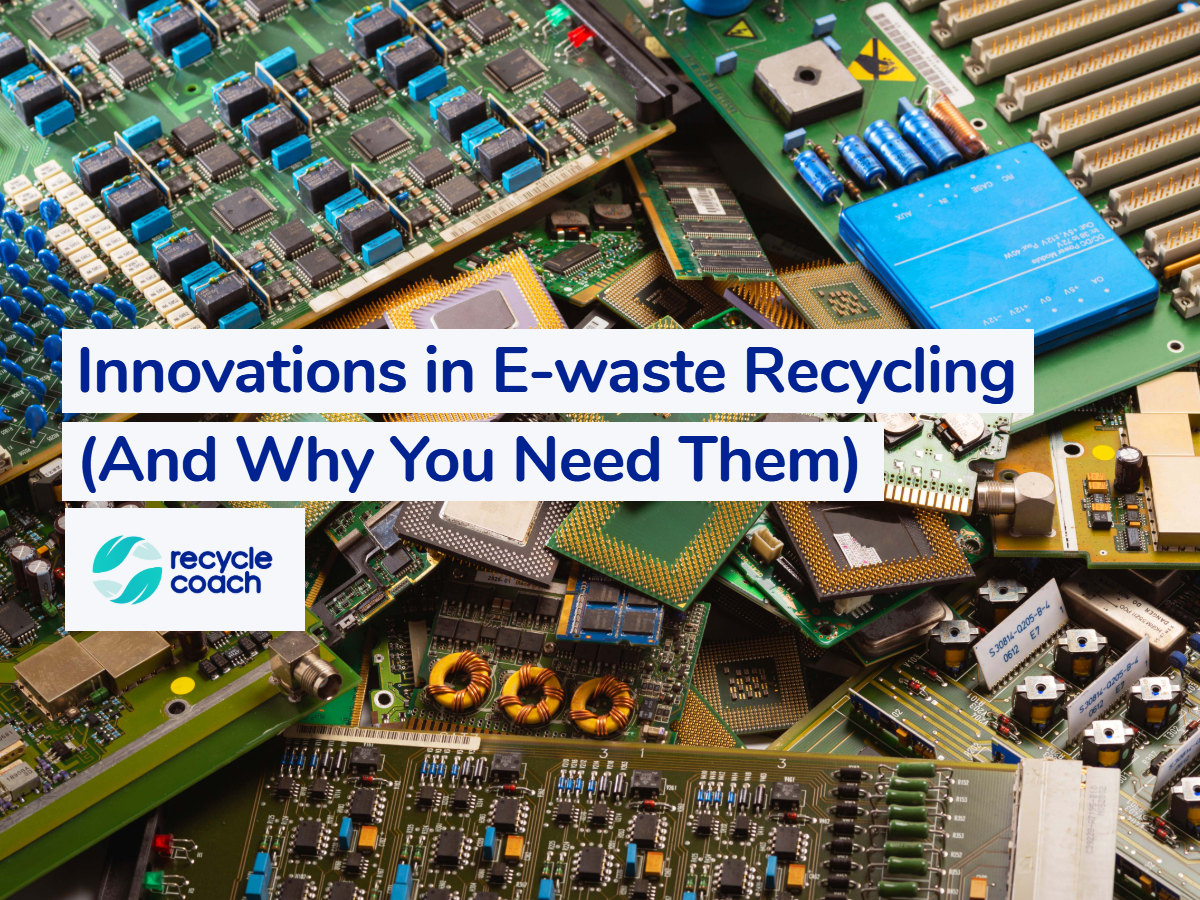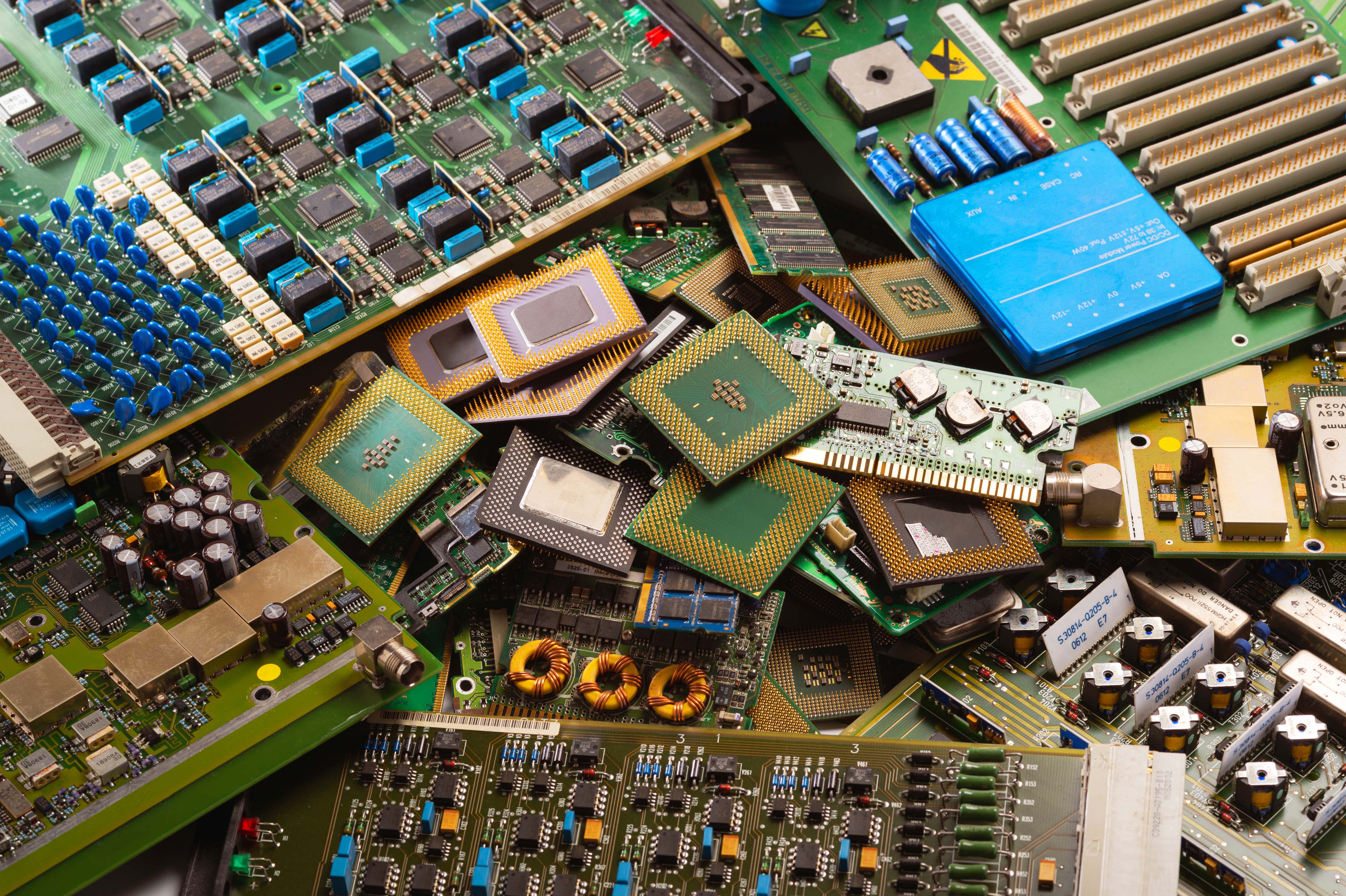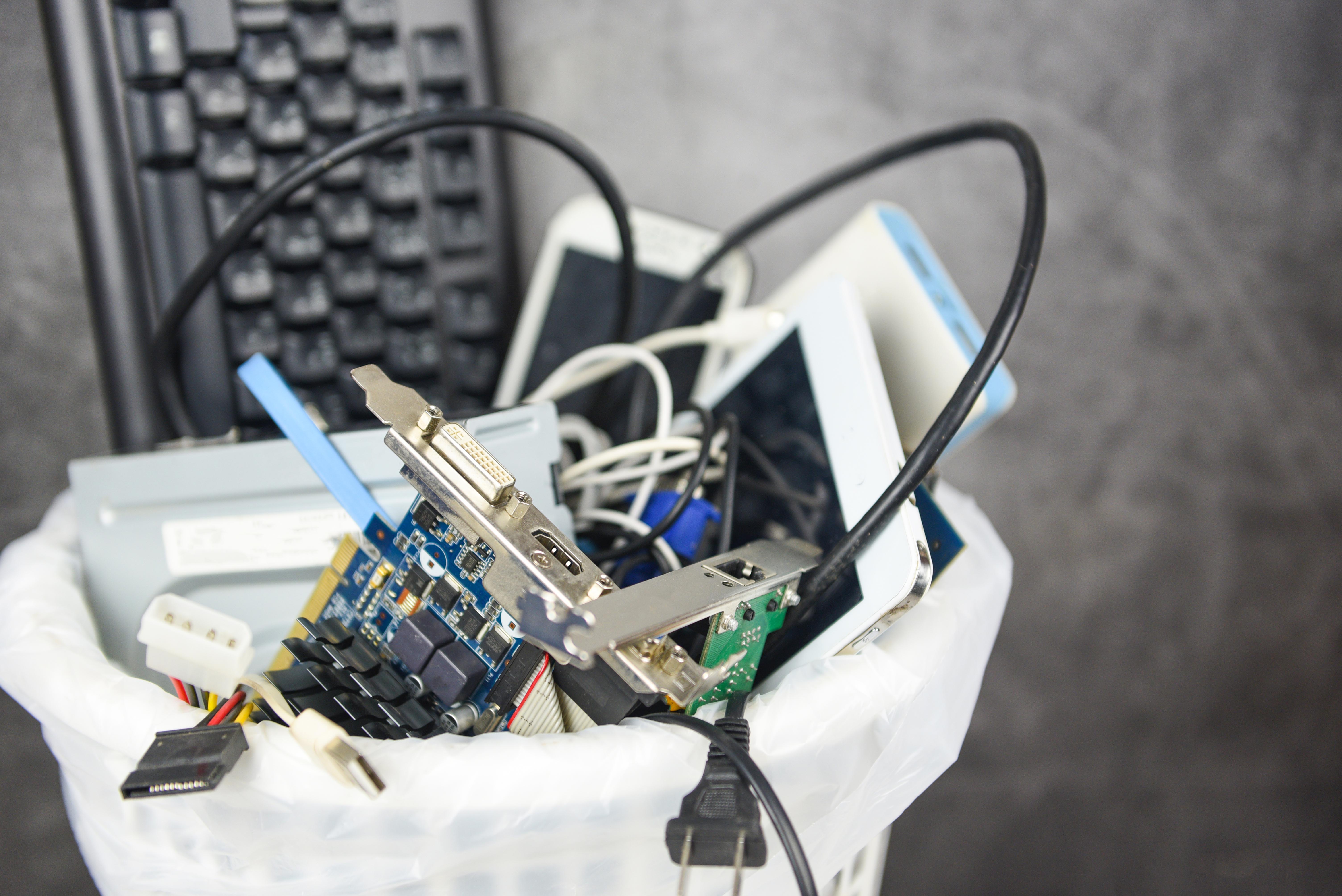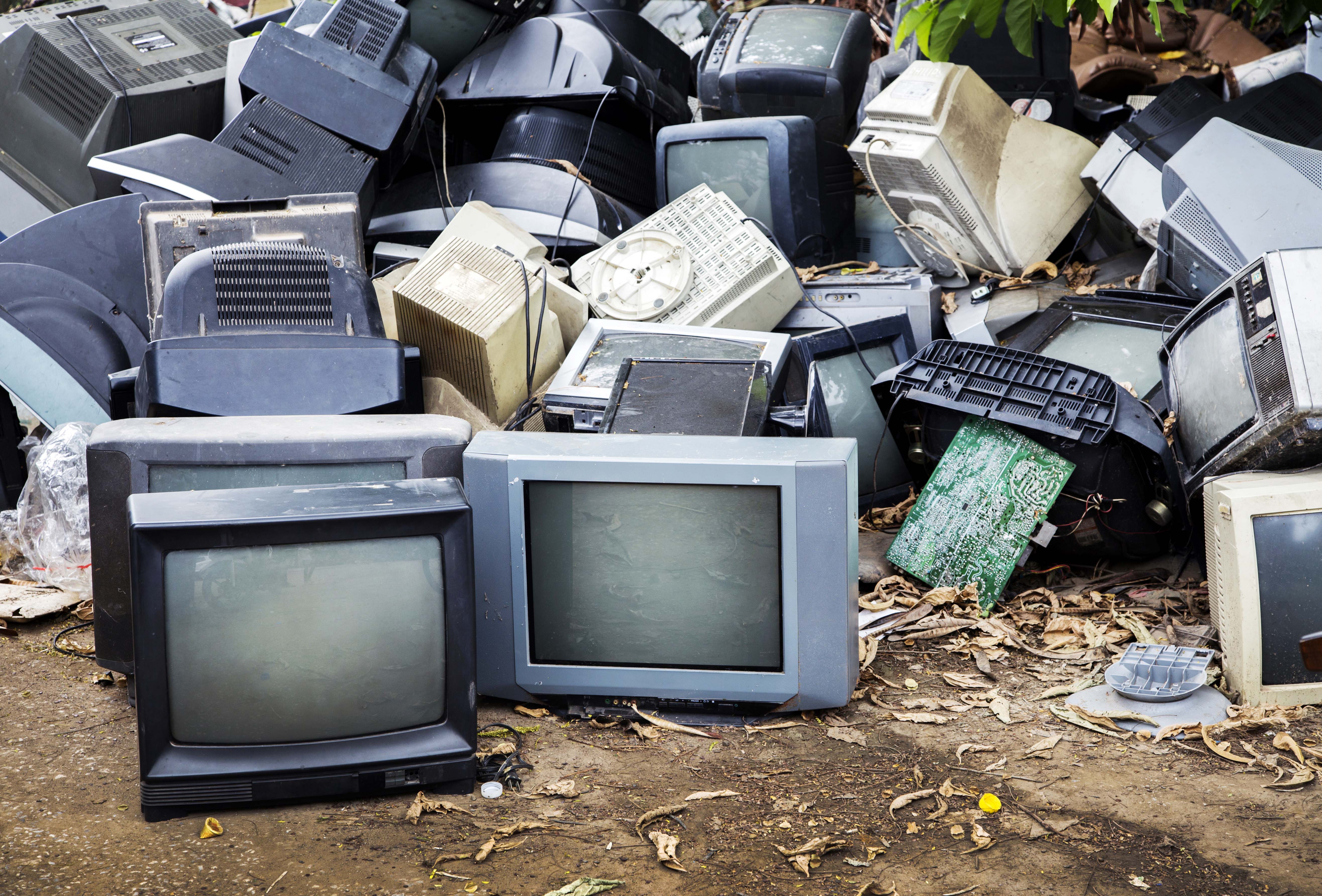Innovations in E-waste Recycling (And Why You Need Them)

E-waste recycling doesn’t get nearly enough attention.
Over the past few years, e-waste has taken a back seat to highlight more pressing recycling concerns – namely the current plastic crisis and ongoing wishcycling that is crippling the industry. We’ve told ourselves that electronic waste is under control. But is it?
While e-waste makes up just 2% of North America’s landfill trash, discarded electronics also contain the most toxic waste of any other consumer product residents are using and throwing away. Some 70% of the nation’s toxic waste is e-waste.

With new electronics released every few months, and demand growing – the future needs to be toxic waste, and e-waste smart. Right now, we are recycling about 12-13% of all electronics being discarded, which is nowhere near enough to protect our local environments from harm.
In today’s article, we take a look at the latest innovations in e-waste recycling, and why you need to start making these a priority for your municipality.
E-Waste Reclamation Programs
Solving the e-waste problem is going to take some time. While the best minds in North America work on that, it’s up to our Public Works Directors to make sure that people have locations where they can drop their significant amounts of e-waste.
Many of the materials in computers, cell phones and televisions contain metals that have real value, like gold, aluminum, silver, copper, palladium, iridium and iron. Reclamation programs work to collect and strip these discarded electronics of their reusable and valuable materials.

Many States have implemented laws that make companies who sell these items responsible for their reclamation, which is a step in the right direction. Additional e-waste recycling programs should be implemented at learning institutions, shopping malls and local libraries.
The harmful effects of e-waste on environmental areas are well-known. When locals don’t recycle, these items create toxic landfill zones that pollute the ground, the air, and the water in surrounding locations. Human life and wildlife suffer as a result of living near toxic environments.
Innovations in reclamation include:
- An incredible biological filter made from mushrooms that is able to reclaim up to 80% of the gold found in e-waste. This comes courtesy of a Research Centre in Finland. This process removes the need for harmful chemicals, and it’s significantly more effective.
- Silicone circuit boards have been developed by researchers at the University of Illinois. These can be dissolved in water, dramatically reducing the impact of e-waste reclamation and disposal in landfills. Likewise, dissolvable batteries are being developed for similar reasons.
- Magnetic sorting of e-waste must be embraced to easily split non-magnetic materials from magnetics materials during the scrap sorting process. Magnetic separators are becoming a powerful force in efficient e-waste recycling practice. One company experienced a 300% improvement in processing capacity after installing this technology.

Support for E-waste Recycling Education
Electronic waste recycling starts with residents and companies in your municipality. When you support e-waste education it will help residents understand their role in the recycling process, and how to achieve it without causing contamination or harm.
Recycle Coach will help you bring everyone together, so that rolling out specific types of recycling information like this is easier. Our technology takes care of the residential education that you need to implement at the start of every successful e-waste recycling process.

Support for E-waste Technology and Progress
Technology has the ability to transform the efficiency of the e-waste recycling industry. With better laws that promote recycling, the integration of new technologies and innovations – and a push for greater e-waste recycling knowledge among the general public – the industry can and will improve.
E-waste has the potential to become a viable income stream for businesses that engage in their own reclamation programs. With an average of 24 electronic devices per household, it’s essential that these programs – practical and educational – are rolled out as soon as possible.
The Public Works Department of every municipality must move to support greater investment for e-waste reclamation facilities, new technologies and resident involvement. E-waste recycling is a long way away from being ‘under control’ and plans must be made now to recover what we can.
These electronic waste innovations will help us prevent the toxic environmental impact that comes with leaving these items in the landfill or incinerating them.
By 2030, each municipality in North America must have established a way for residents to successfully recycle the majority of their electronics safety and consistently. It’s up to you to begin this process from within your department.
It’s time to make e-waste recycling a priority, so that we can stop telling ourselves it’s under control, and actually get it under control.